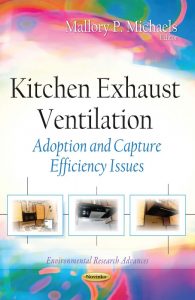Kitchen Exhaust Ventilation: Adoption and Capture Efficiency Issues
Kitchen Exhaust Ventilation: Adoption and Capture Efficiency Issues
Kitchen Exhaust Ventilation,Cooking and cooking burners emit pollutants that can adversely affect indoor air quality in residences and significantly impact occupant health. Effective kitchen exhaust ventilation can reduce exposure to cooking-related air pollutants as an enabling step to healthier, low-energy homes. This report identifies barriers to the widespread adoption of technologies and practice and proposes a suite of strategies to overcome these barriers. The recommendations have been vetted by a group of industry, regulatory, health, and research experts and stakeholders who convened for two web-based meetings and provided input and feedback to early drafts of this document. The most fundamental barriers are (1) the common misconception, based on a sensory perception of risk, that when cooking is unnecessary and (2) the lack of a code requirement.
You can also Read Air-Cooled Heat Exchangers and Cooling Towers Vol.1 & Vol.2
Kitchen Exhaust Ventilation: Adoption and Capture Efficiency Issues Content
- Preface
- Addressing Kitchen Contaminants for Healthy, Low-Energy Homes
- Performance of Installed Cooking Exhaust Devices
- Pollutant Removal Efficiency of Residential Cooking Exhaust Hoods
Product details
- Series: Environmental Research Advances
- Paperback: 93 pages
- Publisher: Nova Science Pub Inc; UK ed. edition (April 6, 2015)
- Language: English
- ISBN-10: 1634636422
- ISBN-13: 978-1634636421
- Product Dimensions: 6 x 0.2 x 9.2 inches
Natural gas cooking burners and many cooking activities emit pollutants that can reach hazardous levels in homes. Venting range hoods and other cooking exhaust fans thought to provide adequate protection when used. This study demonstrates that air flows of installed devices are often below advertised values and that less than half of the pollutants emitted by gas cooking burners are removed during many operational conditions. For many devices, achieving capture efficiencies that approach or exceed 75% requires operation at settings that produce prohibitive noise levels. While users can improve performance by preferentially using back burners, results suggest the need for improvements in hood designs to achieve high pollutant capture efficiencies at acceptable noise levels.

Comments are closed.